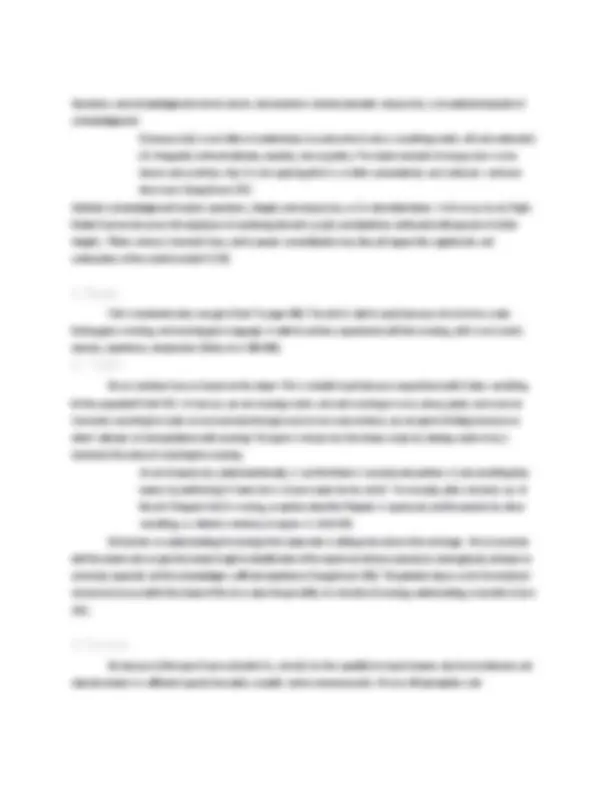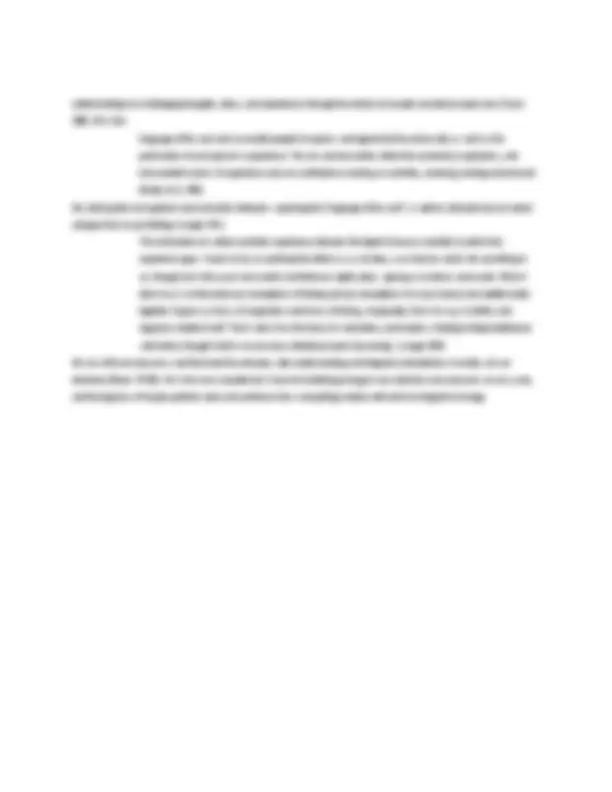




Study with the several resources on Docsity

Earn points by helping other students or get them with a premium plan


Prepare for your exams
Study with the several resources on Docsity

Earn points to download
Earn points by helping other students or get them with a premium plan
Community
Ask the community for help and clear up your study doubts
Discover the best universities in your country according to Docsity users
Free resources
Download our free guides on studying techniques, anxiety management strategies, and thesis advice from Docsity tutors
The concept of art as an expression of human emotions, beliefs, and characteristics. Art is a means of creating meaning and connecting with others, as well as a conduit for translating complex experiences that may be difficult to express through language alone. The document focuses on the emotional complexity of grief and how art can help communicate and acknowledge the depth of this experience. The text also discusses the role of the artist as an expresser and the dynamic nature of artistic forms.
Typology: Study notes
1 / 4

This page cannot be seen from the preview
Don't miss anything!



Art is an expression made visible by a form. The expression contained in the form is an attempt to translate the unnamed and the unknown. Intrinsic to our existence as humans is our quest to create meaning, and art allows that process to take place. Making meaning involves understanding our surroundings and marking our experiences. Art, at its root, is an expression and the artist is an expresser, translating in order to create meaning. Art expresses and translates, art acknowledges and reveals, art transfers and art intervenes. Art is an expression—an expression of feeling, belief, and character. The simplicity of that sentence is rather deceptive and seems tidier than its implications. Just the statement that art is an expression is complex and raises questions: What does art express? Why does art express? How does art express? What does art express? The second part of the statement above seeks to expound upon this question. Feelings, beliefs, characteristics—these are what art expresses, although often they are not easily distilled. Our lives as humans are full of complications and complexities, and our thought and experienced feelings, beliefs and characteristics are reflective of these complexities. Why does art express? Art expresses as a result of the intricacies of life, as a result of humans continually searching for meaning, making meaning out of lived or observed experiences, and attempting to connect to other humans (Camic 289). Art —in the past and in the present, even still—continuously strives to establish an understanding of the unknown, to name the unnamed, to mark the ordinary, and to dignify our existence. Central to each of those purposes are emotions (Camic 290). Expressions involve emotions and the act of expression is wherein the power of art lies (Langer 67). How does art express? Art expresses, and the expression is contained within a form. The word contained , at first glance, is misleading, and although the form is undoubtedly what holds the expression, the form is not necessarily static or permanent; the form can be dynamic (Dryden 196). The form, regardless of whether it is static or dynamic, is what captures the expression—the artist's inner truths. These truths, in order for the art to communicate the expression authentically, must connect with the artist's experience—her or his lived or observed experience (Gillis 106).
If art seeks expression, it must also seek communication: a communication that translates the sought expression. Art, with its nuances of creation and creating, metaphor and embedded meaning, can translate an expression in ways in which words effectively fail. “The concept of significant form as an articulate expression of feeling, reflecting the verbally ineffable and therefore unknown forms of sentience, offers at least a starting point for such inquires. All articulation is difficult, exacting, and ingenious...” (Langer 39). Art is a conduit for humanistic experiences and their ensuing complications. Life is complicated and life is messy; art is capable of translating life's dichotomies, tensions and contradictions (Gillis 114). Some experiences are unnamed through language, and therefore remain unknown until they are named through a different communication method: the expression that exists in art. An expression that is especially emotionally complicated is grief.
Grief, and its understood suffering and pain, cannot be contained with language alone. Language is inadequate: “even language ruptures and implodes under the weight of pain” (Fisher 65). Even artistic attempts to visually translate the difficult expressions are struggles. Grief presents the dichotomy of both absence and presence. How is that dichotomy translatable? How is it able to be communicated? Post-death grief involves the absence of the lost person along with their lingering presence in and around memory and physical space. Pre-death grief, anticipatory grief, involves the absence of what will be and the presence of what will no longer will be. The work of San Francisco photographer Jim Goldberg attempts to translate the dichotomy into an expressed form: photographs. Gillis describes the work: For Jim also gave us a last view: he presented a series of photographs he had taken of his dying father, providing in his remarks an account of the physical and emotional context in which the images were taken. Jim’s image of the empty chair, the Barcalounger that had come in the final days of his father’s life to define a world—the only place to which the dying man could move as an individual—is about absence. The man who sat in the chair, and to whom the chair meant so much, is no longer there. But something remains. If the corporeal form is absent, the chair still maintains the trace of the body of the man who has died; hence, literally, we see both absence and presence here. The trace stands in as a metonymy for the ma n. (109) But the point of art exists within the struggle to communicate the complexities (Gillis 109). The attempt to name the unnamed facilitates the construction of meaning. The photographs of Jim Goldberg are a record of his endeavors to create meaning from the experience (Gillis 109). The artist is constantly searching for truths to express and attempting to express them. “The artist 'sees' the world through eyes trained to acutely appreciate color, light and shadow, surface and volume, and exteriorization of inner truths” (Young-Mason 348). Visual art translates the artist's expression to the viewer, but is also a translation of the viewer's viewing of the art (Holt 424). There are layers of translation that exist, changing with each viewer, perhaps in each setting, upon each viewing. What surrounds the artwork changes the nuances of the communication—the translated expression.
By naming the unnamed and knowing the unknown, art acknowledges what lacked acknowledgement. Once the expression has a form, the expression almost forces acceptance of its existence (Gillis 111). Similarly, ambiguity and apparent paradox go together when Jim Goldberg describes his experience of photographing his father’s death in terms of what could not be seen: 'I could feel something when my father died, but I couldn’t see it.' What Jim Goldberg shows us, however, is the photograph “7:41,” where a sharply focused watch face in the foreground reveals the time of Jim’s father’s death (7:41), and the face of Jim’s father occupies the background in unfocused relief. What the photograph reveals—or does not reveal— constitutes a problem in representation that begs interpretation on both an aesthetic and a human level. It suggests, in a larger sense, the power inherent in representational strategies when art becomes what Jodi Halpern calls the ‘acknowledgement’ sought by those who are dying and those who are left to grieve. (Gillis
understandings by challenging thoughts, ideas, and experiences through the vehicle of complex emotional expression (Camic 288). Art is the language of the soul and can enable people to express and appreciate the universality as well as the particularity of each person's experience. The arts and humanities reflect the existential, inspirations, and transcendent realms of experience and can contribute to creating an aesthetic, nurturing, healing environment. (Bailey et al. 366) Art, utilizing the most guttural communication attempts—speaking the “language of the soul”—is able to articulate human nature and give form to our feelings (Langer 401). The exhilaration of a direct aesthetic experience indicates the depth of human mentality to which that experience goes. A work of art, or anything that affects us as art does, may truly be said to 'do something to us', though not in the usual sense which aestheticians rightly deny—giving us emotions and moods. What it does to us is to formulate our conceptions of feeling and our conceptions of visual, factual and audible reality together. It gives us forms of imagination and forms of feeling, inseparably; that is to say, it clarifies and organizes intuition itself. That is why it has the force of a revelation, and inspires a feeling of deep intellectual satisfaction, though it elicits no conscious intellectual work (reasoning). (Langer 395) Art can shift consciousness and illuminate the unknown, alter understanding and integrate contradictions in reality; art can intervene (Bloom 79-80). Art is the most valuable tool I have for facilitating change in our collective consciousness on any scale, and the legacies of hospice patients were and continue to be a compelling medium with which to forge that change.